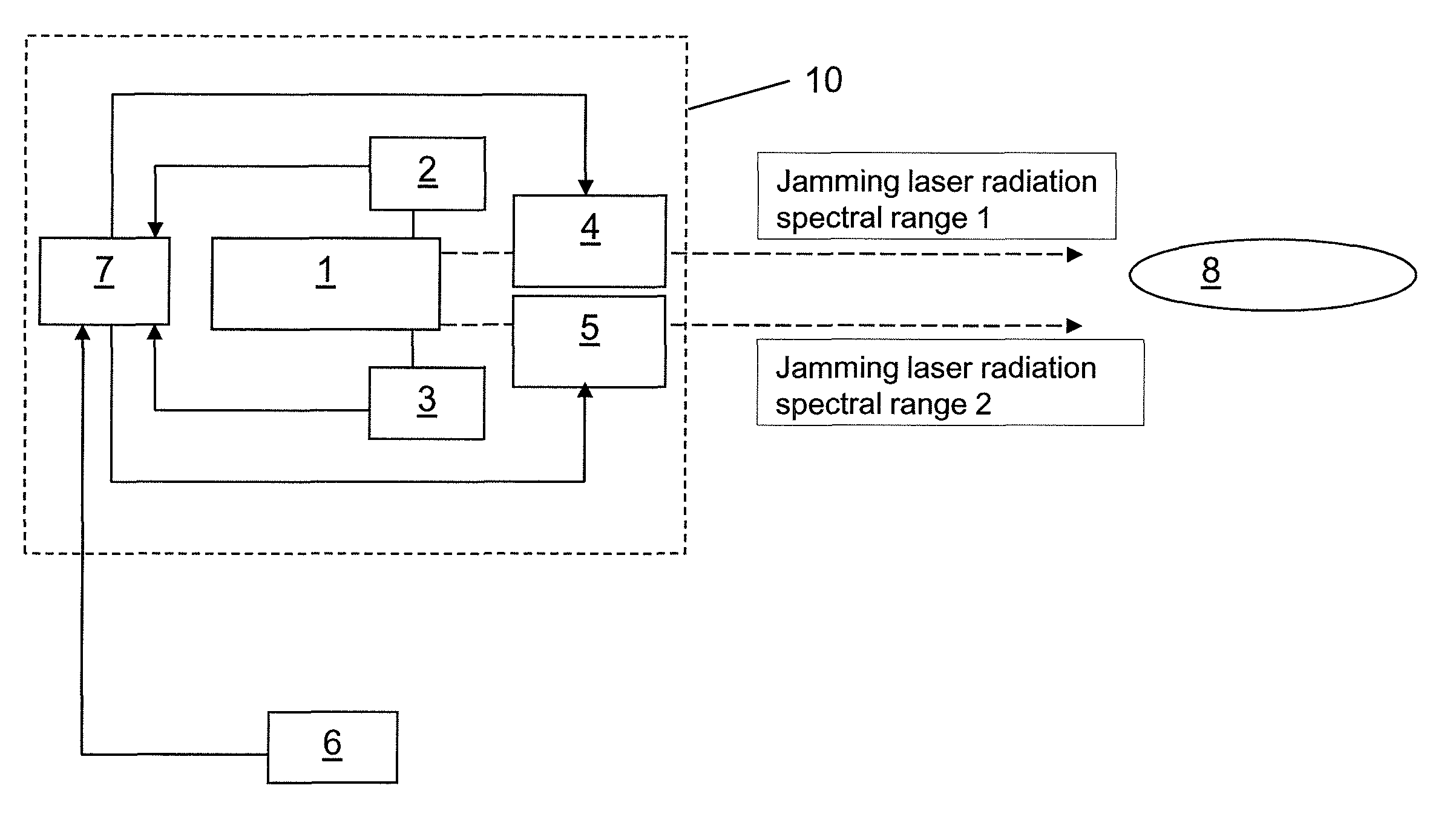Method for operating a jamming laser in a DIRCM system in a manner that is safe for eyes
a laser and dircm technology, applied in the direction of distance measurement, instruments, weapons, etc., can solve the problems of laser safety problems, increased civilian aircraft, and increased military and civilian aircraft at risk of surface-to-air missile attacks (sams)
- Summary
- Abstract
- Description
- Claims
- Application Information
AI Technical Summary
Benefits of technology
Problems solved by technology
Method used
Image
Examples
Embodiment Construction
[0035]The invention is explained in greater detail using an exemplary embodiment with reference to a FIGURE. This shows a schematic representation of the components of a DIRCM system 10 relevant to the implementation of the method according to the invention. The FIGURE shows an embodiment in which a distinction is made between the two spectral ranges 1 and 2.
[0036]The DIRCM system shown comprises the jamming laser 1 for engaging an oncoming SAM 8. The altitude above ground is determined continuously, e.g. by a radar altimeter 6. The measuring devices 2 and 3 continuously determine the energy radiated in spectral range 1 and 2 since the start of combat. Using this data, the control unit 7 then generates cut-off signals for the two locking devices 4 and 5 to switch off the laser emission in the spectral range 1 and 2 of the laser, so that the maximum permitted radiation on the ground according to EN 60825-1 is at no time exceeded.
[0037]The switch-off in this case is performed by the c...
PUM
 Login to View More
Login to View More Abstract
Description
Claims
Application Information
 Login to View More
Login to View More - R&D
- Intellectual Property
- Life Sciences
- Materials
- Tech Scout
- Unparalleled Data Quality
- Higher Quality Content
- 60% Fewer Hallucinations
Browse by: Latest US Patents, China's latest patents, Technical Efficacy Thesaurus, Application Domain, Technology Topic, Popular Technical Reports.
© 2025 PatSnap. All rights reserved.Legal|Privacy policy|Modern Slavery Act Transparency Statement|Sitemap|About US| Contact US: help@patsnap.com


